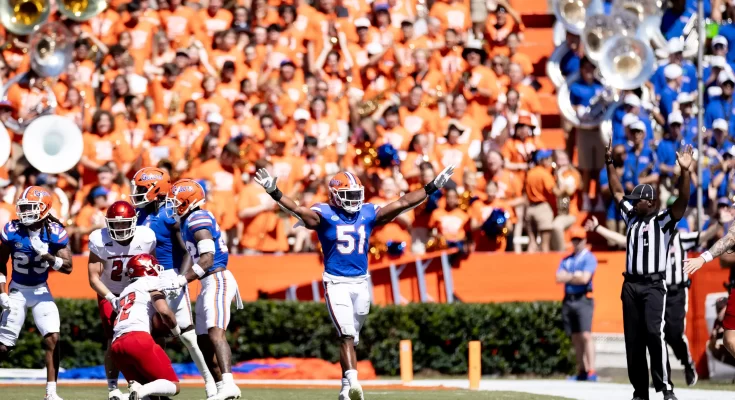BREAKING: SEC Stadiums Ranked—From Roaring Cathedrals to Whispering Chapels, Which Aren’t for the Faint of Heart?
If college football is a religion, then SEC stadiums are its cathedrals—massive, awe-inspiring arenas where the faithful gather every fall to worship with chants, cheers, and, occasionally, good-natured chaos. Each stadium is a sanctuary, hallowed ground steeped in tradition, history, and enough noise to rattle even the toughest opposing teams. The SEC is famous not just for its powerhouse programs, but for the atmosphere inside its stadiums that can feel more like a raucous revival than a football game.
The question on every fan’s lips is: which SEC stadium truly reigns supreme as the toughest place to play? Which venues offer the most relentless home crowd energy that shakes visiting teams to their core? And, conversely, which stadiums—while still sacred in their own right—rank a little less intimidating when the opposition shows up? We dove deep into the roaring crowds, traditions, stadium sizes, noise levels, and home-field advantages to bring you the definitive ranking of SEC football cathedrals, from the fiercest temples of terror to those a bit more forgiving.
At the very top of this list are stadiums that practically demand earplugs. Places where the very walls seem to echo with decades of victory cries, where opposing offenses often find themselves overwhelmed before the first snap. These stadiums aren’t just venues—they’re fortresses, psychological battlegrounds where home-field advantage is a sacred rite of passage.
Take Alabama’s Bryant-Denny Stadium, for instance. It’s not just the size—nearly 100,000 seats packed with the Tide’s fervent supporters—but the sheer intensity of those fans. Every game day, the stadium shakes with passion, a cacophony of cheers, cowbells, and chants that make it feel like a thunderstorm. Opponents walk in knowing they’ll face not just the team on the field, but a tidal wave of noise and tradition that has crushed countless foes.
Then there’s LSU’s Tiger Stadium, affectionately known as Death Valley—a name earned with good reason. The stadium’s unique architecture traps and amplifies crowd noise, turning every defensive stop into a moment of near-deafening celebration. The fans here don’t just cheer—they roar, they chant, they create an atmosphere so electric that even the players feel it vibrating in their bones. Visiting teams have often spoken about the difficulty of hearing signals or communicating on the field in Baton Rouge, making Tiger Stadium a nightmare for any offense.
Georgia’s Sanford Stadium also belongs in the upper echelon. It’s steeped in southern football culture, with the famous hedges surrounding the field adding to its iconic atmosphere. The Bulldog faithful bring an unyielding energy, often overwhelming opponents with relentless noise and passionate support that lasts from kickoff until the final whistle.
Beyond these giants, stadiums like Florida’s Ben Hill Griffin Stadium, Kentucky’s Kroger Field, and Auburn’s Jordan-Hare Stadium also rank high for their fan engagement and intensity. Each has its own unique vibe—whether it’s Florida’s swampy roar, Kentucky’s basketball-turned-football fever, or Auburn’s “War Eagle” battle cry—that makes them formidable places for visitors.
But what about the stadiums that, while still proud homes to passionate fans, don’t quite reach that ear-splitting decibel level? This isn’t to say these venues lack spirit or tradition. Far from it. They simply might offer a slightly less intimidating environment, where visiting teams have found more success or where the fanbase size and stadium design lead to a more measured, though still passionate, atmosphere.
Vanderbilt’s Vanderbilt Stadium, for example, may not boast the largest crowds or the most raucous noise, but it’s a venue rich in history and charm. The Commodores’ faithful are loyal, if smaller in number, and the atmosphere can feel intimate rather than overwhelming. Similarly, Missouri’s Faurot Field holds a special place in SEC lore but doesn’t quite shake the ground like the top-tier stadiums.
Ranking stadiums isn’t just about noise or size—it’s about tradition, fan culture, historical impact, and even the “fear factor” experienced by visiting teams. For example, Ole Miss’s Vaught-Hemingway Stadium might be smaller than some SEC powerhouses, but its tailgating scene and passionate Rebel fans create a unique vibe that opponents dread in their own way.
In the end, this ranking is a celebration of the diversity and passion found across SEC football stadiums. From the overwhelming roar of Tiger Stadium to the intimate energy at Vanderbilt, each venue is a cathedral of college football, offering fans a chance to witness the sport’s grandest traditions in all their glory.
As the 2025 season approaches, fans can look forward to packing these cathedrals once again—ready to raise their voices, shake the stands, and remind everyone why SEC football is the most electrifying game in the country. Whether you’re in a stadium that’s the very definition of hostile territory or one that’s a little more laid-back, the spirit of SEC football will always resonate loud and clear.



